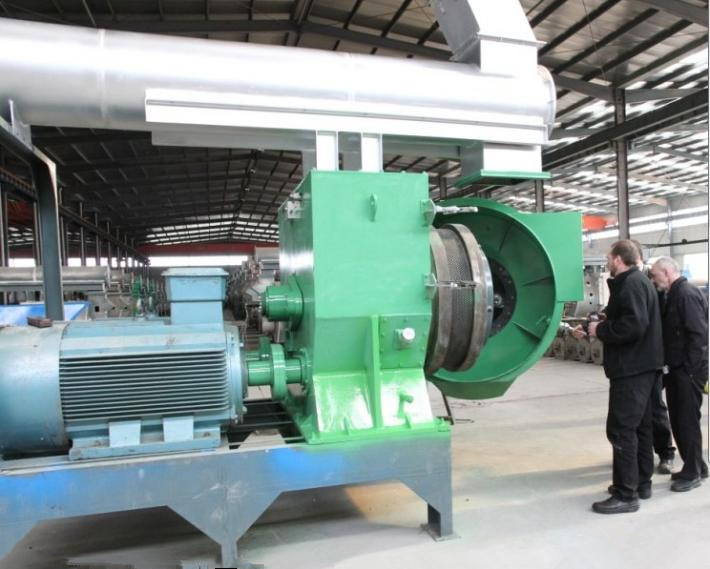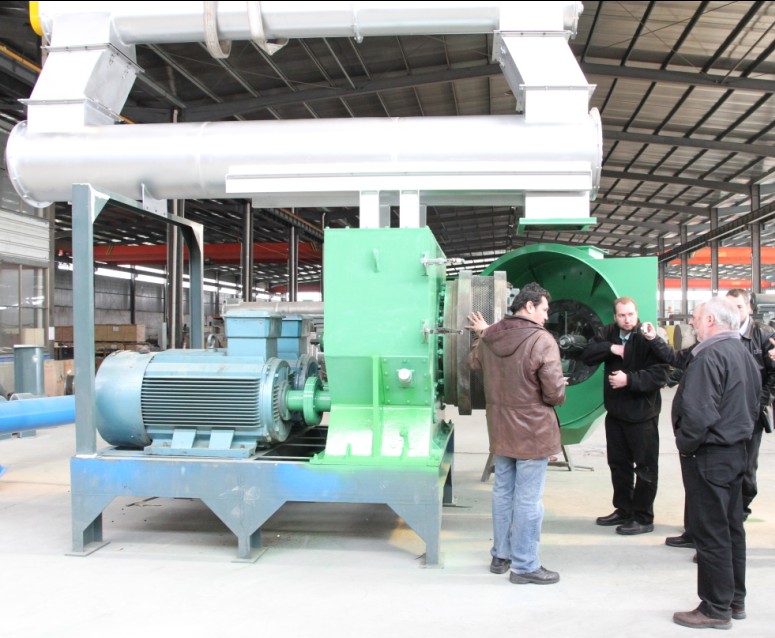Biomass Pellet Fuel Market Across Hungary
Hungary falls behind in using renewable energy sources such as biomass pellet fuel compared with other countries in Western Europe and the history of Hungarian pellet market is rather short. The pellet sector in Hungary was really started in 2008 and most of the pellet plants also started that year. By the end of 2011, 11 pellet plants with small and medium capacity and two larger pellet plants with capacity of more than 30,000 t/year are operating with the total capacity of 126,500 t/year.
A new pellet plant has started production at the beginning of October in Tuzsér, Hungary. The pellet plant plans to produce 7000 tons of pellets per year from 14000 tons of raw materials, mainly sawdust and wood chips coming from local wood processing plant. The pellet plant is regarded a middle sized pellet plant in the Hungarian pellet industry, and is going to establish 12 workplaces for local people.
Currently, there are 15 pellet producing plants in operation in Hungary. Pellets are utilized in approx. 3000 pellet furnaces 1,5% of which is operated by municipalities.
1. Biomass pellet production and capacity in Hungary
The pellet industry in Hungary has experienced a significant increase since 2007. In 2008, 7 pellet plants were active totaling just 5,000 tons of production. In 2008 the Hungarian Pellet Association (Mapellet) was founded and today it represents the majority of pellet producers, boilers and fireplaces producers and distributors, altogether 38 members. A subsidy system funded through the Environment and Energy Operational Program provides investment subsidies up to 50-70% for the establishment of new pellet plants.

In 2010, 10 pellet producers were listed, 2 of which produce agro pellets. The production capacity in 2010 was estimated at 160,000 tons while the actual production in 2009 was 68,000 tons, 134,000 tons in 2010. The growth of pellet production in Hungary has increased sensibly in recent years. In 2008, there were 7 plants for pellet production. Production itself reached 5,000 tons per year, which is also the total production capacity of the country (Pellets@las).
READ: HOW TO START A PELLET PLANT
Based on a public report of the HPA in 2009, after plant tests, the aggregated capacity of Hungarian pellet production would be almost 20 times bigger than it was in 2008. Three major investments took place in recent years, which made the plants reach a capacity of 6,000 tons in Petıháza, 11,000 tons in Belezna and 80,000 tons in Lajosmizse, respectively.
2010 witnessed the pellets production capacity amount to 160,000 tons (Magyar Pellets Egyesulet “A pelletgyártás helyzete és fejlődési irányai”).
However, according to The Bioenergy International, in December 2009, the pellet production capacity was 125,000 tons/year and in January 2011, it decreased to 90,000 tons/year.

2. Consumption
Domestic consumption of wood pellets is very small in 2008, with the level of consumption of 1,000 tons per year. 80% of wood pellets are exported to Poland and Italy, while agro pellet is almost exclusively used for domestic consumption in biomass boilers. The majority of pellets is sold in small bags (15 kg to 50 kg), followed by big-bags (500 kg to 1500 kg) and bulk pellets.
READ: BIOMASS PELLET MARKET ANALYSES OF FRANCE
Consumption can be best approximated by sales figures from boiler and stove manufacturers and traders. But it is not possible at the moment to say even with that estimation whether we are close to real numbers. Most of Hungarian consumers have small or medium-sized capacity, thus there is no survey or questionnaire that can be distributed among all of them. Even with hard work based on approaching consumers and receiving their feedbacks, Kazai concluded that only a really small portion of the total Hungarian production is consumed by domestic users. The overall number of questioned consumers were only enough to get a picture of the purchase habit, satisfaction rate about the technique and other sociological themes.
Based on interviews, the sales increased to around 500 pellet stoves and over 2,000 boilers in 2008. However, we should consider that these interviews do not represent the whole market so that underestimations are possible. We should also add that Hungarian investments on the field of boiler manufacturing are not focused only on equipments fed with wood pellets, but also on those which can use mixed pellets, wood chips and other biomass energy sources (Pellets@las).
READ: PELLET FUEL MARKET IN AUSTRIA
3. Trade and logistic aspects
In 2008, the level of export was 4,000 tons (Pellets@las). It is estimated that 75% of the production of pellets in 2009 was exported. Only 25% of the production was used to supply domestic needs. As mentioned earlier, most of the production capacity is set up close to the available raw materials, which means generally the western part of the country. These market actors based their activity of producing and trading wood pellets on the possibility to export their product. The producers in the South-eastern part of Hungary based their production on agricultural main products or by-products. Most of the producers from this region are working seasonally, as a result of the raw material occurrence, just to serve the local needs in the area without trading larger amounts. The majority of pellets is sold in small bags (15 kg to 50 kg), followed by big-bags (500 kg to 1500 kg) and pellets sold loose.
About 70-75% of the pellets produced by Hungarian pellet plant are used for export. The main target countries include Italy, Austria, Slovakia and Poland. The Hungarian domestic demand is mostly covered by local production of the Hungarian pellet plants with 30% of the total consumption coming from imports, which was approximately 5,000 t in 2010. Most of the pellet is imported from Ukraine and Romania to Hungary.
-----------------------------------------------------------------------------------------------------------------------------------------------------
How to start a biomass pellet plant is usually raised by clients or potential clients who possess abundant and sufficient biomass material such as wood blocks, wood sawdust or saw shavings, bark, tree branches and twigs as well as rice husk, wheat straw, cotton stalks, maize stalks, corn cobs, bagasse, palm EFB, bamboo. We hereby summarize some basic info which is pretty necessary for you to take into consideration.
News
- Small Pellet Machine Manufacturer-Kingman
- Application of Wood Pellets and Use of Biomass Pellets
- From Fossil Fuel into Biomass Pellet Fuel
- Biomass Pellet Making Machines Market
- Applying of pellet stoves for home use
- Highland pellets to build $130 million facility in arkansas
- How to deal with the blocked hammer mill
- How to Make Wood Pellets with Sawdust
- The government policy promotes the development of biomass fuel
- Market analysis of biomass pellet fuel
- Strategic positioning of renewable energy
- Biomass energy has pass through the pre assessment
- The key point of deep processing of biomass pellet
- Harbin is promoting the development of biomass machinery
- The development of biomass formation technology I
- The development of biomass formation technology II
- Biomass energy industry is now going full tilt in 2015
- Rapid increasing demand of sawdust pellet on the market
- Pellet fuel market in EU
- Chinese Biomass Energy Conference held in Beijing
- Future market development of straw pellet mill
- Peanut Shell Pellet Mill Makes High Quality Pellets
- The utilization of straw is only 5%, biomass energy needs our attention!
- Corn straw pellet machine relieves the tight supply of fuel energy
- Reasons for loose or not forming of biomass pellet mill





